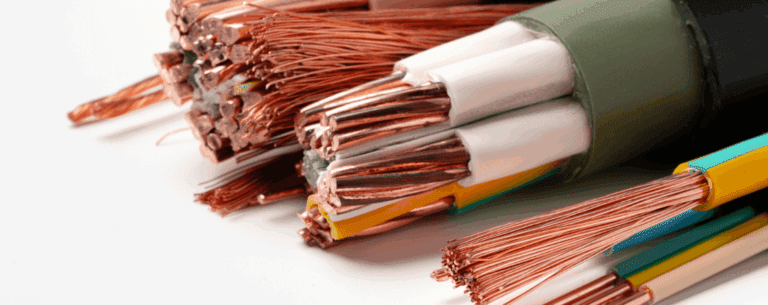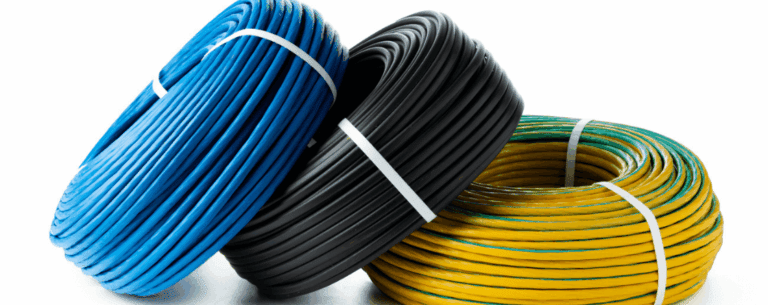
Common Industries That Rely on Cable Assembly Manufacturers
Keeping complex systems online takes more than parts and datasheets. It takes cable assembly manufacturers...
Read MoreThe aerospace industry demands precision, reliability, and durability in every component, with cables and wiring being no exception. Aerospace cable assemblies are critical to ensuring the seamless functioning of various systems within aircraft and spacecraft. However, as technology evolves and industry standards grow more stringent, the challenges surrounding aerospace cable assemblies have become more complex. At the same time, innovative solutions have emerged, paving the way for safer and more efficient operations. This article explores the key challenges in aerospace cable assembly and the innovations addressing these issues.
Aerospace cable assemblies face distinct challenges due to the highly demanding environments in which they operate. From extreme temperatures to intense vibrations, aerospace cables must endure conditions that would render standard cables ineffective. Below are some of the key challenges faced in this industry:
Cables used in aerospace must withstand a variety of extreme environmental conditions, including high temperatures, freezing cold, and fluctuations in humidity. The cables are often exposed to the elements, particularly in aircraft, where they must function reliably across varied climates and altitudes. Failure to withstand these conditions could result in electrical faults, posing a risk to both the crew and the integrity of the vehicle.
In aerospace applications, space is limited, and every gram matters. Cables used in aircraft or spacecraft must be lightweight yet capable of transmitting signals and power effectively. Heavier assemblies can increase fuel consumption, while larger ones may not fit within the compact confines of modern aerospace designs. As such, the challenge is finding a balance between minimising size and weight while ensuring reliability and performance.
Aerospace vehicles are subject to constant mechanical stress, with vibration being a primary concern. The vibrations from engines, turbulence, and even take-off can all cause wear and tear on cable assemblies. Over time, this stress can lead to breaks, shorts, or reduced efficiency in cable performance. Developing cable assemblies that can withstand such mechanical stress without compromising performance is a significant challenge.
The aerospace industry is one of the most heavily regulated sectors, and for good reason. Safety standards for cable assemblies are strict, covering everything from material composition to fire resistance and signal integrity. Cable assemblies must comply with stringent guidelines to ensure they meet the safety and performance standards required in aerospace. Navigating the complex web of regulations while still pushing for innovation can be a difficult balancing act for manufacturers.
Despite the significant challenges, the aerospace industry has seen a range of innovations in cable assembly technology. These advances not only address existing challenges but also push the boundaries of what is possible, leading to more efficient and safer cable systems. Let’s look at some of the key innovations in aerospace cable assemblies.
One of the most exciting developments in aerospace cable technology is the use of lightweight materials. Innovations in insulation and conductor materials have led to the creation of cables that are both light and strong. These materials not only reduce the overall weight of the cable assembly but also enhance its durability. For instance, lightweight composite materials are being used to provide insulation that is resistant to both heat and cold while maintaining flexibility and strength.
As aerospace systems become more complex, the need for smaller, more efficient components has grown. Miniaturisation has been a key focus in aerospace cable assembly innovation. Smaller connectors, wires, and components allow for more compact designs, making it easier to fit cable assemblies into tight spaces. This innovation helps address the space constraints while maintaining the necessary performance standards.
Electromagnetic interference (EMI) is a significant concern in aerospace applications. Cable assemblies need to be shielded effectively to ensure that signals are transmitted without disruption. Innovations in shielding techniques, including multi-layered shielding and the use of advanced materials like conductive polymers, have greatly improved the performance of aerospace cables. These techniques not only protect the cable from EMI but also help maintain the integrity of data transmission, ensuring safe and reliable communication between systems.
Heat resistance is crucial in aerospace environments, where cables are often exposed to high temperatures. Innovations in heat-resistant materials have enabled the development of cables that can operate at much higher temperatures than traditional cables. This includes the use of advanced polymers and other synthetic materials that can maintain structural integrity under extreme heat, reducing the risk of cable failure during flight.
As the demand for precision in aerospace cable assemblies grows, manufacturers increasingly rely on automation to ensure consistency and quality. Automated processes minimise human error and produce each assembly to exact specifications, a critical factor in aerospace where even minor faults can have catastrophic results. Automation boosts production efficiency, enabling manufacturers to meet the high demand for aerospace cables in the market.
The innovations outlined above have undoubtedly improved the safety, efficiency, and reliability of aerospace cable assemblies, but the industry is far from stagnant. Looking to the future, we can expect further advancements in materials science, data transmission technologies, and automated manufacturing processes. As the aerospace industry continues to evolve, cable assembly manufacturers will play a key role in ensuring that new systems and technologies are adequately supported by robust, high-performance cable solutions.
Manufacturers like Gem Cable actively meet the evolving needs of the aerospace sector by focusing on innovation, precision, and compliance. Their products handle the demands of this challenging industry with lightweight materials, advanced shielding, and automated assembly. Aerospace cable manufacturers continuously push the boundaries of what’s possible, delivering cutting-edge solutions that drive performance.
Aerospace cable assemblies are a critical component of modern aircraft and spacecraft. The challenges they face are numerous, from harsh environmental conditions to space and weight limitations, but ongoing innovations in materials, design, and production processes are making significant strides in overcoming these obstacles. With the aerospace industry growing more complex, the need for reliable and high-performance cable assemblies will only increase. By staying ahead of the curve, companies like Gem Cable ensure they remain at the forefront of this rapidly evolving industry.
Let’s discuss how Gem Cable can support your aerospace projects with innovative cable assembly solutions tailored to meet your needs.

Keeping complex systems online takes more than parts and datasheets. It takes cable assembly manufacturers...
Read More
Keeping critical infrastructure online and mission systems ready needs more than components. It requires domestic...
Read More
Selecting a cable supplier is an engineering decision. Experienced engineers know that reliable UK cable...
Read MoreReady to talk cables, fibre or full network solutions? Get in touch with our team today, we’re here to help.